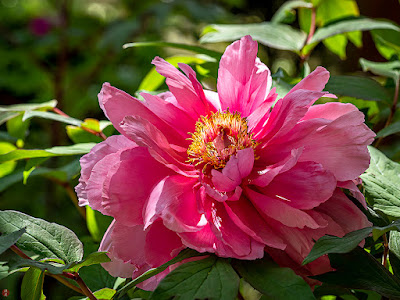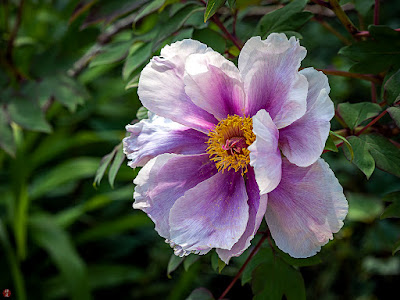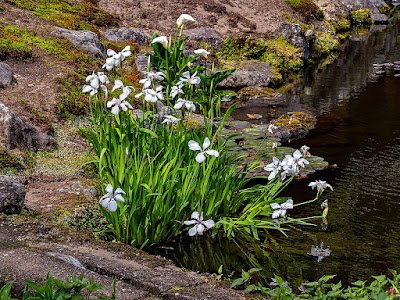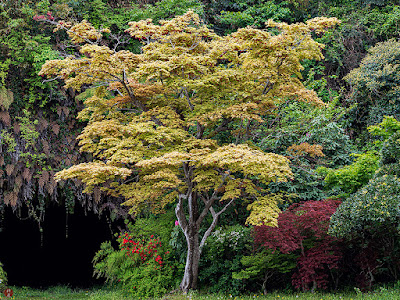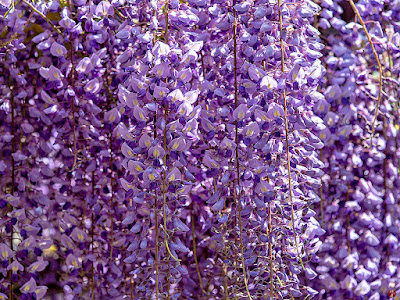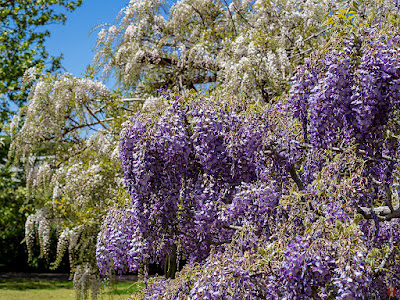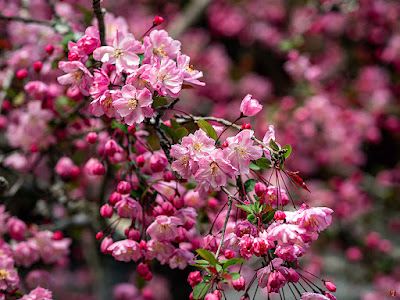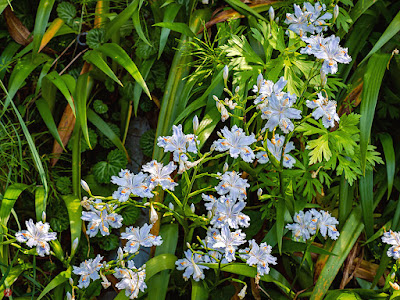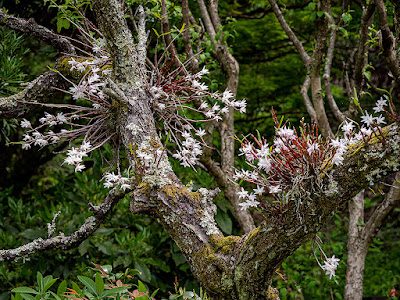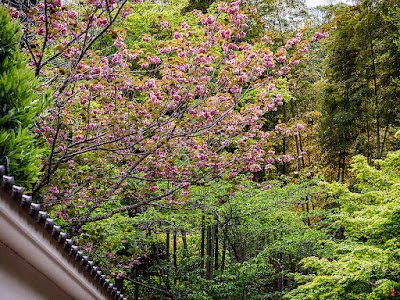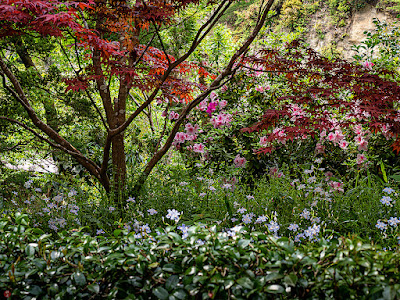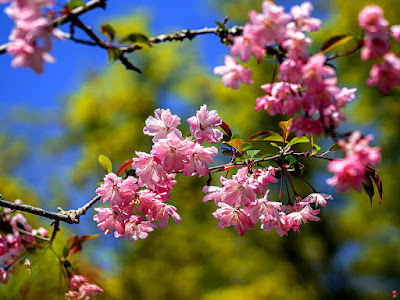The magnificent flowers of peonies, which are the typical flowers that adorn the gardens with brilliant colors in the latter half of spring, are in full bloom as if to compete against each other for their grace and dignity in their realm.
The peony is a flowering tree native to China, and its noble flowers have been highly praised as the king of flowers there.
The peony is believed to have been introduced into Japan from China during the Nara period (710-794), but according to one theory, it was first brought to Japan as a medicinal plant by Kukai (Kobo Daishi), who was an Japanese envoy sent to the Tang Dynasty and later founded the esoteric Shingon school of Buddhism in Japan during the Heian period (794-1185).
Each of these flowers continues blooming for only a few days, and then their thin fragile petals, which look like luxurious silk crepes, rapidly loose their moisture and fall off one by one as if to narrate the ruin of royalty.

